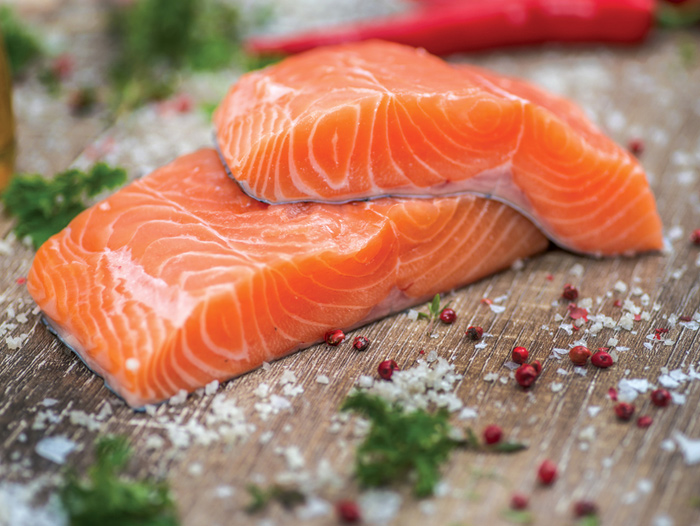
Salmon has become the guinea pig of the seas when it comes to using technology to supplement falling fish populations. Now it’s moved onto land—and into the laboratory.
The fatty orange fish was the second-most-consumed seafood in the U.S. in 2017, after shrimp, and per capita consumption increased 11 percent, to 2.41 pounds per person, from the prior year, according to the National Fisheries Institute, an industry group. Globally, demand for salmon has skyrocketed, along with that for all fish, fueling overfishing and threatening supply. Industrial-scale salmon farming, once seen as a solution, has its own problems. Massive stocks of smaller fish are depleted to feed farmed salmon, and parasites flourish in salmon pens where farmers use pesticides, contributing to pollution and ecosystem destruction. Sea lice have infested farms in Norway and Scotland in recent years, and a deadly algae bloom killed salmon in Chile, a top farmed-salmon producer. Farmed fish sometimes escape, too, contaminating nearby wild salmon.
With rising incomes in developing nations driving demand, fish and seafood now account for almost a fifth of the animal protein people consume. Unsurprisingly, the need for a solution to this less-than-virtuous circle has become evident to a growing number of entrepreneurs and startups.
To read the rest of the story, please go to: Bloomberg



